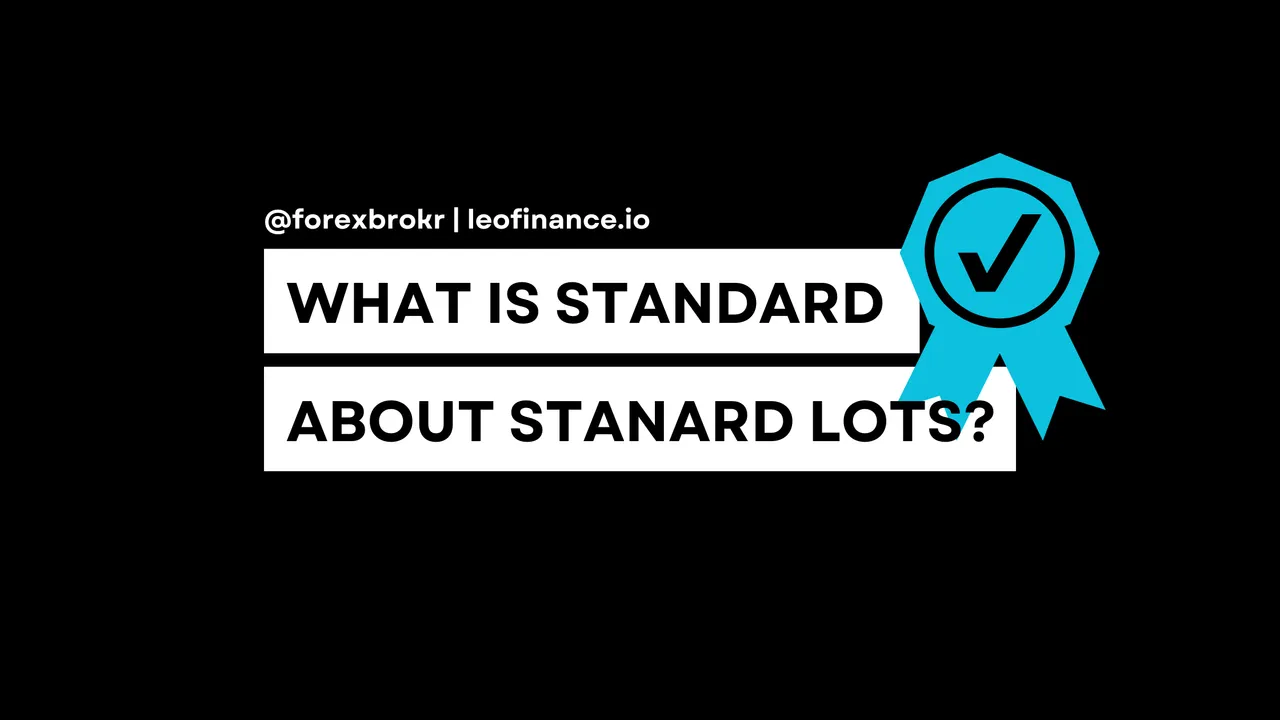
Direct from the desk of Dane Williams.
The idea of standard lot sizes in forex trading has its roots in the evolution of the foreign exchange market itself.
Unlike many other financial markets, the forex market lacks a centralised exchange.
Instead, it operates through a decentralised network of banks, financial institutions, corporations and individual traders.
This decentralisation brings both benefits and challenges, one of which is the need for a standardised unit of measurement for trading volume.
Enter the standard lot.
The standard lot size, equating to 100,000 units of the base currency in a currency pair, has become a universally accepted standard across the forex market.
However, it's important to note that this standardisation isn't broker-specific.
Rather, it's a convention that emerged to address the practicalities of trading within a decentralised environment.
The origin of the standard lot size can be traced back to the early days of forex trading when financial institutions, multinational corporations and governments engaged in currency transactions.
These entities needed a consistent way to communicate the size of their trades, which led to the establishment of the 100,000-unit standard lot size.
This size struck a balance between being large enough to accommodate the needs of major players while remaining manageable for practical trading purposes.
As the forex market evolved and retail trading gained prominence, the standard lot size persisted as a means of maintaining consistency and transparency.
While this standardisation wasn't enforced by a specific regulatory body or authority, its widespread adoption naturally occurred due to the market's inherent need for a common unit of measurement.
This approach ensured that regardless of the trading platform, broker or individual trader, the concept of a standard lot remained constant.
The reasons behind the establishment of the standard lot size are multifaceted.
One key factor is risk management.
Trading larger lot sizes involves higher levels of risk, which is why the standard lot size might be more suitable for institutional traders and those with substantial capital reserves.
Smaller retail traders on the other hand, via their forex broker of course, can opt for micro lots or even smaller sizes to manage risk proportionally to their account balance.
When it comes to micro lots, the direct participation of these smaller trade sizes in the interbank market is less common.
The interbank market tends to involve significantly larger trade volumes, often surpassing the scale of micro lots.
Therefore, the bulk of micro lot trading activity takes place at the retail level, where traders transact through online platforms provided by brokers.
Here's where things become interesting.
While micro lots might not be directly traded in the interbank market, their availability and utilisation by retail traders still contribute to the broader forex ecosystem.
When traders engage with micro lots through their brokers, they generate trading volume and activity.
This, in turn, can influence the price movements of currency pairs.
The cumulative effect of numerous retail traders using micro lots can have an impact on the supply and demand dynamics within the market.
Additionally, while micro lots might not be traded directly in the interbank market, the concept of leveraging remains intertwined with their availability.
Brokers often provide leverage to traders, allowing them to control larger positions than their account balances would otherwise permit.
This leverage can collectively influence market dynamics as your broker and their liquidity providers are still trading in standard lots when it comes to the interbank market.
In essence, the standard lot size isn't the result of a single entity's decision but rather an organic development driven by the needs of the forex market itself.
It emerged as a practical solution to ensure consistency, transparency, and risk management in a market characterised by its decentralised nature.
As the forex market continues to evolve, the standard lot size remains a fundamental aspect that underpins trading volumes and facilitates the functioning of the market as a whole.
Best of probabilities to you.